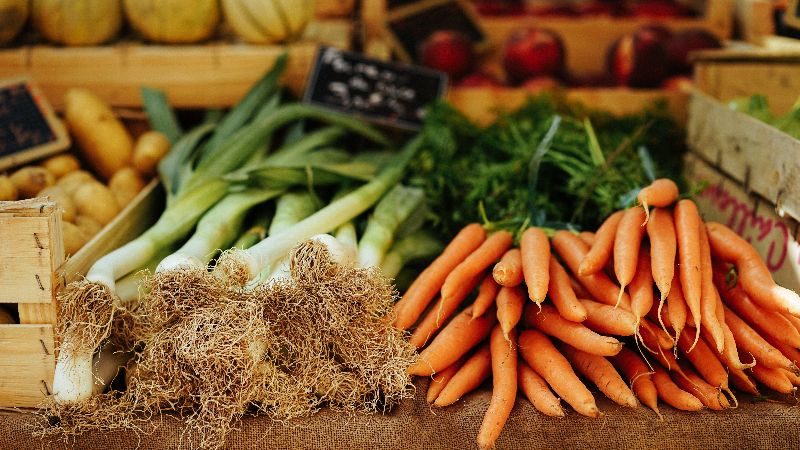Can you eat carrots if you have type 1 or type 2 diabetes?
An important component in the treatment of diabetes is diet. Only a balanced and rational diet, limiting easily digestible carbohydrates and fats will avoid acute and chronic hyperglycemia and other possible complications, restore impaired metabolism, and ensure normal physiological processes in the body.
The basis of nutrition is vegetables and low-fat foods. Nutritionists recommend consuming tomatoes, peppers, cabbage, and zucchini in any quantity, while limiting the amount of carrots in your diet. But this is a popular vegetable crop - its root vegetables are used to prepare first and second courses, canned food, marinades, salads, baby purees, and desserts.
Chemical composition and characteristics of carrots

Substance content per 100 g of the edible part of raw carrots:
| Substances | Quantity |
| Organic acids | 0.3 g |
| Alimentary fiber | 2.4 g |
| Water | 88 g |
| Ash | 1 g |
| Vitamin A, RE | 2000 mcg |
| Beta carotene | 12 mg |
| Vitamin B1, thiamine | 0.06 mg |
| Vitamin B2, riboflavin | 0.07 mg |
| Vitamin B3, niacin | 1 mg |
| Vitamin B4, choline | 8.8 mg |
| Vitamin B5, pantothenic acid | 0.26 mg |
| Vitamin B6, pyridoxine | 0.13 mg |
| Vitamin B9, folates | 9 mcg |
| Vitamin C, ascorbic acid | 5 mg |
| Vitamin E, alpha tocopherol, TE | 0.4 mg |
| Vitamin H, biotin | 0.6 mcg |
| Vitamin K, phylloquinone | 13.2 mcg |
| Vitamin RR, NE | 1.1 mg |
| Potassium, K | 200 mg |
| Calcium, Ca | 27 mg |
| Silicon, Si | 25 mg |
| Magnesium, Mg | 38 mg |
| Sodium, Na | 21 mg |
| Sera, S | 6 mg |
| Phosphorus, Ph | 55 mg |
| Chlorine, Cl | 63 mg |
| Aluminium, Al | 323 mcg |
| Bor, B | 200 mcg |
| Vanadium, V | 99 mcg |
| Iron, Fe | 0.7 mg |
| Yod, I | 5 mcg |
| Cobalt, Co | 2 mcg |
| Lithium, Li | 6 mcg |
| Manganese, Mn | 0.2 mg |
| Copper, Cu | 80 mcg |
| Molybdenum, Mo | 20 mcg |
| Nickel, Ni | 6 mcg |
| Rubidium, Rb | 23.5 mcg |
| Selenium, Se | 0.1 mcg |
| Strontium, Sr | 8.7 mcg |
| Fluorine, F | 55 mcg |
| Chromium, Cr | 3 mcg |
| Zinc, Zn | 0.4 mg |
| Starch and dextrins | 0.2 g |
| Mono- and disaccharides (sugars) | 6.7 g |
| Glucose (dextrose) | 2.5 g |
| Sucrose | 3.5 g |
| Fructose | 1 g |
| Essential amino acids | 0.312 g |
| Nonessential amino acids | 0.595 g |
| Saturated fatty acids | 0.037 g |
| Polyunsaturated fatty acids | 0.135 g |
KBJU and glycemic index
The calorie content of raw carrots is 33-35 kcal, glycemic index (GI) is 35 units. Boiled and stewed carrots have a lower energy value - 26 kcal. The vegetable in this form is easier to digest, but at the same time the GI increases to 85 units. The level of protein, fat and carbohydrate content depends on the method of heat treatment of the root vegetable.
| Substances | Boiled carrots without salt | Raw carrots |
|---|---|---|
| Squirrels | 0.8 g | 1.3 g |
| Fats | 0.2 g | 0.1 g |
| Carbohydrates | 5.2 g | 6.9 g |
Increases or decreases blood sugar
Heat treatment of vegetables increases their glycemic index. Therefore, after eating stewed or boiled carrots, the level of glucose in the blood increases sharply. The pancreas begins to produce insulin. Its release reduces the amount of glucose, after a short time hunger appears again, followed by food intake. This should not be allowed, since most diabetics have problems with excess weight.
Raw carrots have a low GI, so the breakdown and conversion of carbohydrates into glucose occurs gradually over a long period of time.The rate of increase in blood sugar is minimal. Products with a low glycemic index provide a feeling of fullness for a long time and prevent the accumulation of new fat deposits, which is especially important for overweight people.
Conclusion. Blood glucose levels are increased by heat-treated carrots: boiled, stewed, steamed.
Useful properties of carrots

Carrots are a source of carotene. This strong antioxidant protects against infections, increases the body’s ability to resist harmful environmental factors, strengthens the immune system, and has a beneficial effect on the condition of large and small vessels.
Carrots are valued for their high content of vitamin A - 2000 mcg per 100 g. It is necessary for vision, healthy skin and hair, normal formation of bones and teeth, and maintenance of metabolism. Its other functions:
- takes part in the formation of new cells;
- participates in the production of steroid hormones;
- slows down the aging process;
- prevents the development of malignant tumors;
- reduces the level of bad cholesterol in the blood.
Carrots to some extent replenish the body's need for B vitamins (thiamine, riboflavin, niacin, choline, pantothenic acid, pyridoxine, folate), vitamins C, E, H, K, PP. The vegetable also has a rich mineral composition: potassium, calcium, magnesium, sodium, phosphorus, chlorine, iodine, copper, selenium, fluorine, iron, zinc.
Carrots contain 20 essential and non-essential amino acids, omega-3 and omega-6, saturated fatty acids. They help vitamins and minerals to be absorbed, participate in the formation of proteins, improve mental abilities, and increase the body's resistance to disease.
Carrots help prevent the development of hypertension, cardiac ischemia, and heart failure, as it rids the body of excess cholesterol, normalizes blood circulation, and increases the strength and elasticity of the walls of blood vessels.
It has a positive effect on the functioning of the liver, kidneys and the entire urinary system, which manifests itself in the removal of excess fluid and harmful substances from the body. Thanks to fiber, it has anti-inflammatory properties, improves intestinal microflora, and helps cope with existing constipation.
This is interesting:
Is it possible to eat onions if you have diabetes?
Is it possible to eat carrots if you have type 1 and type 2 diabetes?
Is it possible to eat carrots if you have diabetes mellitus type 1 and 2? This is a relative concept. Meal planning must be approached responsibly. This is not a temporary treatment measure associated with certain restrictions on certain foods, but a way of life. It is wrong to exclude all foods with medium and high GI. It is important to observe moderation here. A small amount of a prohibited product will not cause harm to health if you compensate for it during the day with a more strict diet in relation to other components of the menu. And the safest product can become harmful if consumed in unlimited quantities.

When answering the question whether diabetics can eat carrots, it is necessary to take into account a number of factors, including:
- vegetable preparation technology;
- the use of heat treatment;
- combination with other products;
- activity of enzymatic reactions in the intestines.
It is advisable to exclude boiled and stewed carrots from the diet or reduce their consumption to a minimum, since its glycemic index tends to 90 units. In its raw form, it is allowed to eat no more than 200 g of root vegetables per day.
Advice. Questions about what foods are allowed for type 2 diabetes, whether carrots are allowed or not, in what form and quantity, are discussed with a nutritionist personally. Each organism is individual, so when planning a menu, the specialist takes into account the severity of symptoms, the presence of concomitant diseases, the patient’s age, gender and body weight, lifestyle, and eating habits.
How can she harm
Carrots after heat treatment have a high glycemic index; accordingly, after they enter the body, sugar levels quickly increase. The pancreas does not produce enough insulin to lower glucose levels. As a result, the patient’s condition worsens and the disease progresses.
Boiled and stewed carrots are easier to digest, but require increased insulin production, provoking a feeling of hunger. Excessive consumption of such a product leads to depletion of the pancreas and the accumulation of new fat deposits. Insulin, produced in large quantities, slows down the breakdown of fat, which causes weight gain. This should not be allowed for diabetic patients who are overweight and want to lose weight.
What is the benefit
One of the most significant effects of carrots is cleansing the digestive system of waste, toxins and other harmful substances.. The vegetable contains coarse plant fibers (fiber), which clean the intestines well, activate metabolism, and improve digestion.
The obvious advantage of fresh carrots is their low GI. The orange root vegetable supplies the blood with glucose gradually, the energy released is enough for several hours. This approach reduces the load on the pancreas, ensures uniform energy consumption, and reduces the likelihood of accumulating new fat deposits.
Carrots grown without the addition of pesticides serve as a source of vitamins, micro- and macroelements necessary to maintain normal life processes and well-being. B vitamins improve the functioning of the nervous system, normalize night sleep, and reduce the effects of stress. Vitamin E increases the strength and elasticity of vascular walls and takes an active part in the formation of new blood cells.
Retinol neutralizes the effects of dangerous free radicals, magnesium and potassium improve neuromuscular transmission, and ascorbic acid activates the immune system. It is the coordinated work of all organs and systems that has a beneficial effect on the course of diabetes mellitus, promotes stable remission, and reduces the risk of possible complications.
How to properly and how often eat carrots for type 1 and type 2 diabetes

Despite the presence of carbohydrates in carrots, they should be present in the diet of patients with type 1 and type 2 diabetes mellitus, but in limited quantities. Without harm to health, you can eat no more than 200 g of fresh carrots or 100 g of boiled or stewed carrots per day. Carrot juice for diabetes is limited to 200-250 ml per day. You should not eat orange root vegetables and dishes made from it every day; the optimal frequency is 2-3 times a week.
How to choose a root vegetable
Ideally, use carrots from your own harvest or grown in guaranteed safe conditions without pesticides.The quality of the product, storage conditions and method of heat treatment determine its benefits to the body, the rate of increase in blood sugar and insulin levels.
What you should pay attention to when buying carrots at the market, in stores, supermarkets:
- Tops. Should be fresh, rich green in color. Withered yellow leaves are a sign of long-term storage of the vegetable.
- Roots. Fleshy, elastic to the touch, bright orange in color, without signs of damage by insects, cracks, black spots or other damage.
- Size. The juiciest and most delicious are medium-sized root vegetables, weighing about 150 g. Too large ones are usually hard and, as a rule, oversaturated with nitrates.
How to store
Carrots are stored in the refrigerator for 1-2 months or all winter in a cool, damp place. Before storing root vegetables in the refrigerator, remove the tops, wash the carrots thoroughly, and dry them. Packaged in bags or containers, providing air access.
For long-term storage, unwashed root vegetables are placed in layers in a box or bucket, each layer sprinkled with sand or sawdust. The room temperature should be at 0...+5°C, humidity - 85-90%.
In what form to use
Nutritionists recommend consuming the root vegetable boiled or stewed, since the process of heat treatment increases the content of phenols and antioxidants. These substances slow down the aging process and resist the development of diseases, including diabetes. This makes the vegetable easier to digest, and besides, you won’t eat too much of it.
However, if we take into account the important characteristic of carbohydrates (glycemic index), then fresh carrots break down more slowly into glucose and gradually saturate the blood with it, ensuring uniform energy consumption.If you eat it in acceptable quantities, the likelihood of a sharp increase in blood sugar levels is zero.
In limited quantities, diabetics are allowed freshly prepared carrot juice. During the processing of carrots, it retains all substances beneficial to the human body, quickly and permanently satisfies the feeling of hunger, and reduces the level of bad cholesterol in the blood.
What to eat with

Carrots go well with almost all foods, but diabetics are allowed only those that have a low and medium glycemic index. The right choice will help you create a list of products with a GI from 5 to 55 units, which includes:
- vegetables - lettuce, broccoli, avocado, green beans, mushrooms, white cabbage, bell peppers, tomatoes, celery, spinach, radishes, onions, eggplant;
- fruits and berries - lemon, orange, cherry, currant, raspberry, sweet cherry, strawberry, blueberry, gooseberry, blackberry, pear, grapefruit, pomegranate, apricot;
- garden greens - parsley, dill, green onions, lettuce, horseradish;
- nuts - hazelnuts, almonds, peanuts, pistachios, hazelnuts and pine nuts;
- fish and seafood - oysters, mussels, shrimp, crayfish;
- lean baked or boiled meat - turkey, rabbit, veal, beef, chicken fillet;
- legumes - lentils, peas, beans;
- dried fruits - raisins, dried apricots;
- Brown rice;
- durum wheat pasta;
- buckwheat;
- boiled potatoes.
Any of the above products are allowed to be consumed in limited quantities. Heat treatment increases GI, and proteins and fats reduce this indicator. Therefore, the diet of diabetics should be mixed. Whenever possible, vegetables and fruits are eaten raw.
For reference. For better absorption carrot season with a small amount of vegetable oil.
Recipes with carrots for type 1 and 2 diabetes
The list of foods with a low and medium glycemic index is varied, which allows you to organize a balanced and varied diet. Carrots are used in cooking as a spice, food seasoning, ingredient in first and second courses, salads, canned food, and desserts.
Below we will look at delicious and simple recipes with carrots for diabetics.
Vegetable soup with meatballs
Ingredients:
- vegetable broth - 1.2 l;
- beef - 200-300 g;
- onions - 2 pcs.;
- carrots - 1 pc.;
- colored broccoli - 400 g;
- greens - 20-30 g;
- chicken egg - 1 pc.;
- vegetable oil - 2 tbsp. l.;
- salt and pepper to taste.
Cooking process:
- Make minced beef, add one chopped onion, a raw egg, salt and pepper to taste. Form meatballs.
- Roughly chop the second onion and grate the carrots. Sauté vegetables in a small amount of vegetable oil until golden brown.
- Place cabbage and meatballs in boiling broth. Cook over low heat until the meat is cooked.
- 10-15 minutes before the soup is ready, add the fried onions and carrots. Serve garnished with finely chopped herbs.
Dietary carrot cutlets

Products:
- fresh carrots - 400 g (3-4 medium-sized roots);
- semolina - 2 tbsp. l.;
- wheat bran - 2 tbsp. l.;
- vegetable oil - 1 tbsp. l.;
- lemon juice - 1 tbsp. l.;
- lemon zest;
- salt;
- water.
How to cook cutlets:
- Grind the carrots on a medium grater. Simmer in a saucepan until half cooked with the addition of a small amount of water.
- Add all other ingredients to the carrots: semolina, bran, lemon juice and zest, salt, vegetable oil.
- Mix the mixture well, form small cutlets, place on a baking sheet covered with parchment paper.
- Bake in a preheated oven for 15-20 minutes at 200°C.
- Before serving, add 1 tbsp if desired. l. low-fat yogurt or sour cream.
Carrot and cabbage salad
Products:
- large carrots - 1 pc.;
- white cabbage - 300 g;
- onions - 20-30 g;
- vegetable oil - 1 tbsp. l.;
- lemon juice - 1 tsp;
- salt and pepper to taste;
- any greens.
Preparation:
- Chop the cabbage, chop the carrots on a Korean grater, finely chop the onion into half rings.
- Season the vegetables with vegetable oil and lemon juice, add salt, pepper, and chopped herbs. Mix everything well.
Carrot cake
Ingredients:
- large carrots - 2 pcs.;
- wheat flour - 50 g;
- oat flakes - 100 g;
- milk - 200 ml;
- chicken eggs - 4 pcs.;
- baking powder - 1 tsp;
- salt on the tip of a knife;
- vanilla sugar;
- butter for greasing the mold.
Preparation:
- Pour warm milk over the flakes and leave to swell.
- Peel the carrots and chop on a fine grater.
- Beat eggs with a mixer with salt and vanilla sugar.
- Pour the cereal and carrots into the egg mixture and stir.
- Sift the flour, add baking powder. Add in parts to the bulk.
- Grease the mold with butter and lay out the dough. Place in a preheated oven. Bake for 50 minutes at 180°C.
- Cool, remove from pan, sprinkle with powdered sugar on top.
Carrot-apple smoothie

Ingredients:
- carrots - 1 pc.;
- apple - 1 pc.;
- apple juice - 100 ml;
- cinnamon - to taste.
Making a smoothie:
- Peel the apple and carrot, chop coarsely, and place in a blender bowl.
- Add apple juice and cinnamon. Beat until smooth. Drink chilled.
Conclusion
Fresh carrots must be included in the menu of patients with diabetes mellitus types 1 and 2. It serves as a source of vitamins and minerals necessary for the normal functioning of the body. Root vegetables contain plant fiber, the consumption of which slows down the absorption of sugar from complex carbohydrates.
To maintain good health and prevent possible complications (for example, hyperglycemic coma), it is necessary to properly plan the menu, prepare carrots correctly and combine them with other foods, and consume them in limited quantities.